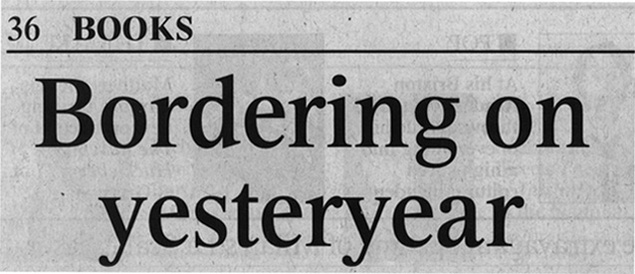
 |
|
|
Bordering onyesteryear |
|
Maps present a unique medium of communication yet an approach to historical
cartography has, at times, prevented the utilisation of maps to their
full advantage. Historians, barring a few such as Martin Gilbert, have
tended to give the impression that they were less than fully comfortable
with visual as opposed to textual exposition. The result is the reduction
of maps to the level of auxiliaries, even in historical atlases. It follows
that attention paid to maps is insufficient - which led to superficiality
and inaccuracies. Many weaknesses of the Cramptons's atlas can be seen
to spring from this tradition. |
András Bereznay fails to lose himself in a chronicle of Europe made in maps ATLAS OF EASTERN EUROPE IN THE TWENTIETH CENTURY By Richard and Ben Crampton Routledge, £55 Enos-Midia line as a frontier on page 21, when the text contradicts
the map it is to explain. Chelm is described correctly on page 33 as
assigned to Ukraine under the Brest-Litovsk Treaty of 1918, yet it appears
in Poland on the related map on page 32, where other frontiers are also
extremely unreliable. There are more mistakes not listed here. |
Diagrams and graphs are useful additions, but
one of them, on page 139, is impossible to interpret. Keys are on occasion
incorrect. Some curious things occur. Each map is allocated with grid markings,
superfluously so as no corresponding data of grid reference is provided
in the index. Maps that show the comparative overview of frontiers which
would be relevant at either end of the book, are dropped incongruously on
pages 144-150, with no reference to their existence in the contents. These problems alone could undermine the credibility of any reference book, yet this atlas has more. Consistency of cartographic quality of all maps featured is a sine qua non of any atlas publication. This is lacking here. Most maps are sketchy; the cartographic methods employed are frequently substandard, after which the maps of the last two sections, of greatly superior quality, come as a surprise. Sadly, most of these are largely devoid of information more specific than found in ordinary geographical atlases. The text accompanying the maps is the best part, although not free from errors. It is mistakenly stated that the Greeks were not required to cede territory in 1897 after their war with the Turks, and it is odd to read about tension in 1815-48 between Vienna and "Budapest". Not only was "Budapest" created later - in 1873 -, but also the seat of the Hungarian Parliament was Pozsony until 1848. On occasion the colourful gains ground at the expense of the important. Space is found to tell of a Romanian's fainting on hearing the terms of the 2nd Vienna Award in 1940 when Northern Transylvania was returned to Hungary, while in describing the Bucharest Treaty of 1918, the crucial fact that Romania annexed Bessarabia remains unmentioned. Despite these problems, the text is essentially useful and informative. Its quality is certainly far superior to that of the maps, raising the question whether the authors would not have served their readers better if they had remained entirely with the means of communication in which they are so clearly more at home. András Bereznay conceived and compiled the maps of The Times Atlas of European History (Times Books, £25), and contributed to The Times Atlas of the 20th Century (Times Books, £25) |